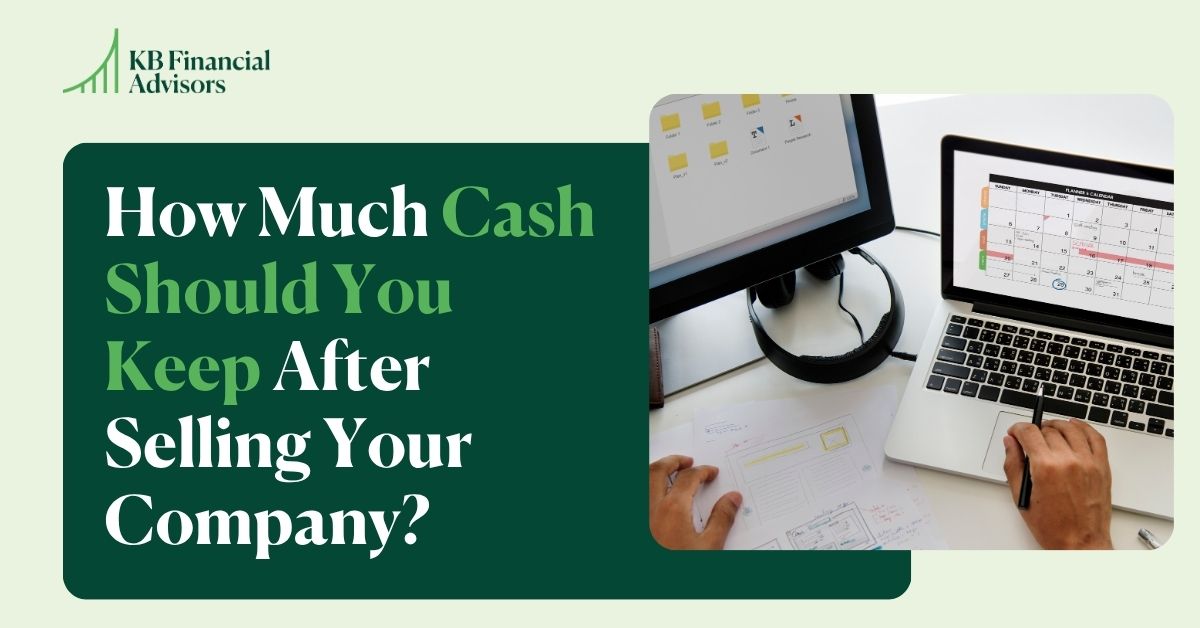We’ve been helping tech employees navigate tender offer tax treatment since 2017… and over the years, these tender offers have become increasingly common in the tech world.
Think of a tender offer as your pre-IPO moment: it’s often the first time you can both exercise and sell your stock options, resulting in a sizeable lump sum of cash.
So… what should you do with that sum of cash from a tender offer? What are the smartest financial moves you can make to deal with taxes while building your future?
We’ve got five ideas for you to help you make the most of your tender offer cash.
1. Pay Your Tender Offer-Induced Tax
Number one, always and forever… before you spend or invest a penny, make sure your tender offer tax obligations are covered. Not the most exciting thing, I know… but getting a massive unexpected tax bill feels terrible… not to mention dealing with an underpayment penalty fee.
Selling during a tender offer is a taxable event, and the IRS will want their fair share. However, if you get ahead of the game now, you can avoid any possible underpayment fees and make sure you’ve got full peace of mind (and a full bank balance) when the tax bill comes.
To start, gather the documents you’ll need to figure out how much you’ll owe from the tender offer exercise:
- Your transaction confirmation, which includes:
- Number of shares or options you sold
- Fees you paid
- Taxes the company withheld on your behalf
- A copy of your pay stub from the tender offer
On your pay stub, check to see how much your company withheld in state and federal taxes for you. If you did a same-day sale of non-qualified stock options (NSO), it’s important to know that they’re subject to supplemental wage withholding rules, and your pay stub should show that 22% of your gross proceeds were withheld for federal taxes, and 10% for state. If you sold incentive stock options (ISO), your employer may not have withheld any income tax. If you sold shares from a past exercise of stock options, they probably won’t have tax withheld on them either. (So pay attention. ????) The good news is that some of your tax may be taken care of, but you’ll probably still have a balance due in April. Once you know how much tax has already been withheld, you can do a tax projection to figure out the rest of what you’ll owe. To calculate this, you’ll need a few more documents:

- Your last tax return
- Tender offer pay stub
- Regular pay stub
When you have these three documents (and the help of a tender offer tax treatment expert), you can calculate what your tax bill will be for the tender offer. As soon as you have that number, we recommend spending some of the cash from your tender offer to make an estimated tax payment to get that bill out of your way and avoid an underpayment penalty. (If you decide to not pay the full estimated amount, set aside the cash you’ll need to pay in April into a high-yield savings account.)
2. Exercise & Hold MORE Options
Managing your incentive stock options before, during, and after an IPO is a marathon. You may have a small victory now with selling in your tender offer, which is fantastic. It’s definitely a win worth celebrating. But you’ve still got a long road ahead of you, so it’s time to jog into the marathon’s aid station, get a drink of Gatorade, and reevaluate your strategy.
If you haven’t exercised any ISO before, the tender offer is the time to start. Since your tender offer tax treatment increases your regular income, it widens the gap between your regular income tax calculation and your alternative minimum tax (AMT) calculation. ???? When this happens, it increases the number of ISO you can exercise and hold in the same calendar year as your tender offer, before you hit that AMT threshold. (Click here for a background on all things ISO + AMT).
It’s an incredible opportunity to exercise ISO, especially with the lump sum of cash you can get on the other side, and I’d hate for you to miss it. PLUS, a tender offer usually means you’ll see an increase in your company’s 409(a) value, which means it’s even better to exercise more ISO before the 409(a) increases.
3. Exercise More ISO in January
Want to reduce AMT impact and gain flexibility? Exercise ISO in January.
When you exercise ISO in January, it puts time in your favor. You get to hold onto the shares for over 12 months (qualifying them for long-term capital gains) before you owe the AMT the next April. This comes with two benefits:
One, you can then sell some of your shares to cover the AMT bill. (This makes exercising your options more affordable.)
Two, you have 11 months to rethink your exercise & hold decision: if you decide to sell those shares any time between February and December, they’ll be taxed based on the sell instead of the exercise, eliminating AMT altogether. (This also gives us a chance to keep an eye on your company’s value and your finances to make sure we make the best decision for you financially.)
If your tender offer happened late in the year, consider keeping the cash in savings until January.
4. Fund Your 1-3 Year Cash Needs
Look at your life goals: do you have any major expenses coming up? Do you want to buy a house? Get married? Have a child? Move to a different city?
If so, don’t invest that money… protect it. Investment returns take time, but investment losses happen fast.
Don’t take risks with the tender offer cash you need: keep the funds for known expenses in a high-yield savings account and access it when needed.
5. Tender Offer Tax Treatment Done: Invest the Remainder of Your Cash
Yes, investing is last on our list.
Why? Investing in the stock market is a long-term play… returns take a long time, and if you do things wrong, you can lose a lot of money fast.
To start, go through items 1-4 above and assign dollar amounts for things you’ll need cash for: tender offer tax treatment, exercising more options, big expenses, etc. THEN (and only then) is it a good idea to invest the rest.
I know… investing a big, shiny lump sum of cash can be tempting… It’s what most of our clients want to do after their first big sale. But when you look at the bigger picture of your finances, it’s usually the thing that should be last on your list.
Don’t rush! The best financial plans prioritise security before growth.
Use Your Tender Offer Cash to Navigate Tax Treatment and Advance Your Financial Goals
A tender offer is a milestone… but how you use the cash matters even more. Focus on tax treatment, smart option exercises, and financial goals first. The choices we make with money are like building blocks, and each choice builds upon the one before.
If you have clear financial goals and a financial plan, following the steps of that plan gets easier and solidifies your finances.
Book a call with one of our experienced financial planners and stock option tax professionals if you’d like help creating your own financial plan.



